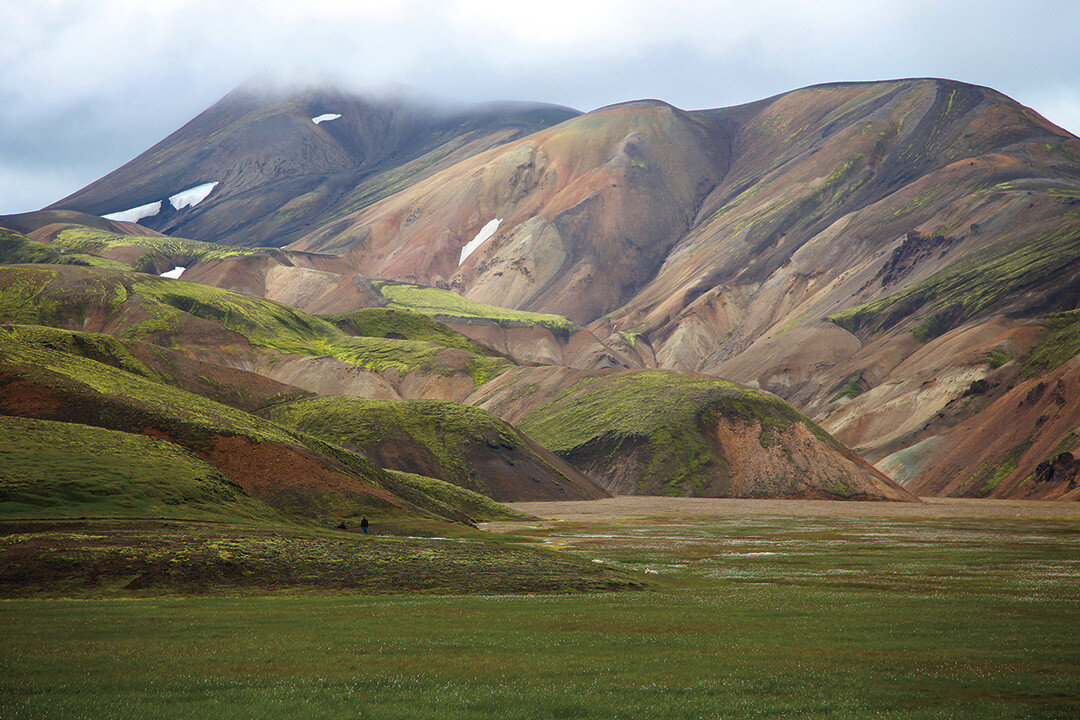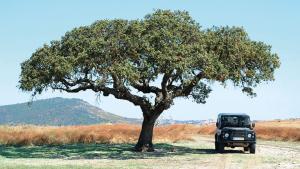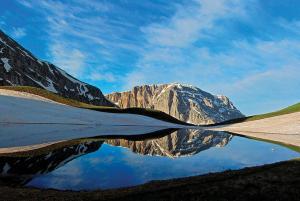Sulfur. It is the acrid aroma of Iceland, and like the raven-hued soil covering the entirety of the island, it is an omnipresent reminder of its volcanic origins. Eons in the making, yet a mere blip in the arc of geologic time, Iceland is––brand new. This explains why the tiny country’s landscapes are so unspoiled, exotic, even otherworldly. After spending several weeks exploring its many fjords, glaciers, beaches, and desolate black sand deserts, I struggled to put my finger on the quintessence of what makes this island in the North Atlantic so vastly different from all other places on the planet. Then it hit me.
The more time I spent exploring the country’s remote corners, the more I began to notice subtle things like how the pebbles on the beaches are uniformly round, and the basalt columns along the coast are formed at precise and almost unnatural 90-degree angles. In the interior, undulating mounds of lichen extended for miles in every direction with a consistent shade of green uninterrupted by unsightly bare patches or anything I would dare disparage as a weed. The mountains were idyllically sculptured and draped with waterfalls seemingly plucked from the pages of a fairy tale. Everywhere I looked I saw a panoramic display of nature, manicured by its own devices––to perfection.
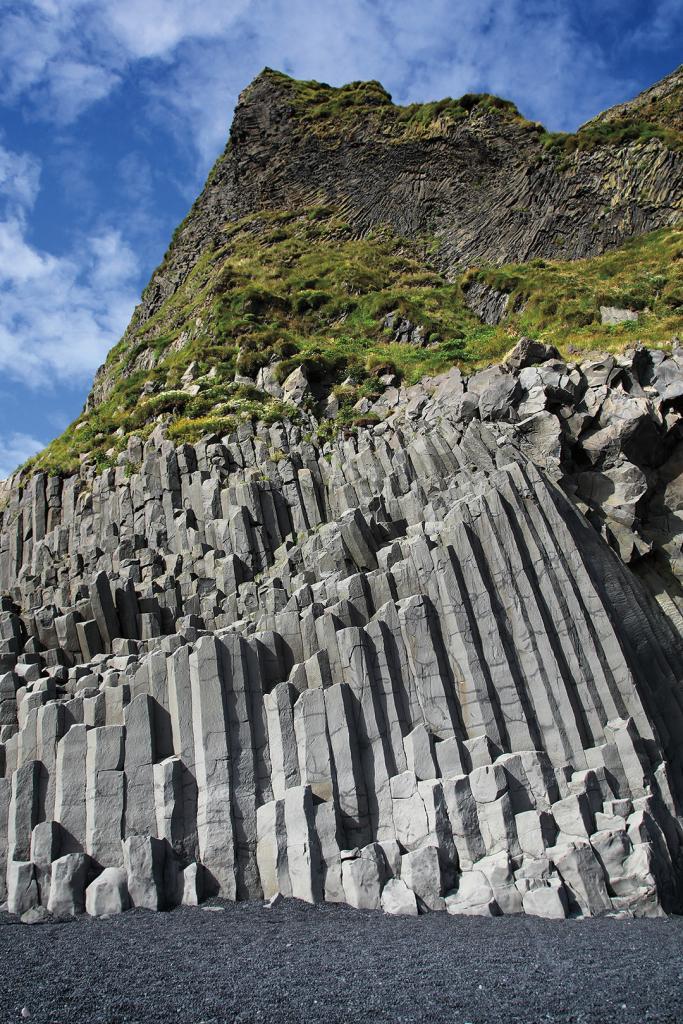
When the first visitors to Iceland arrived on its rocky shores more than 1,000 years ago, I can only imagine they felt as I did. In the 9th century, Gaelic monks left their sanctuary in Ireland and Scotland and sailed west into uncharted waters to seek the spiritual purity of wilderness. They certainly found it, in a land unknown to the rest of the world.
At roughly the size of Kentucky, Iceland’s coasts are ragged and scratched deep with dozens of fjords, lending it more miles of shoreline than the state of California. Although it has only one prominent highway, it stretches for more than 800 miles around the perimeter of the island. Aptly named the Ring Road, it is a popular tourist destination in itself, but within that loop is a vast and untamed expanse covering more than 30,000 square miles known as the Hálendið, or Highlands. Devoid of any major settlements and with a minuscule fraction of the country’s 300,000 residents—60 percent of whom live in and around the capital city of Reykjavík—the interior is a land of volcanoes, glaciers, and dusty plains as lifeless as the surface of the moon.
After collecting a rented 4WD vehicle at Keflavík International Airport, I made my way eastward along the southern coast before turning north onto one of the many gravel tracks crisscrossing the island. Referred to as F-roads, the narrow and meandering routes favored by adventuresome residents and tourists alike access the most distant and primitive regions of the Highlands.
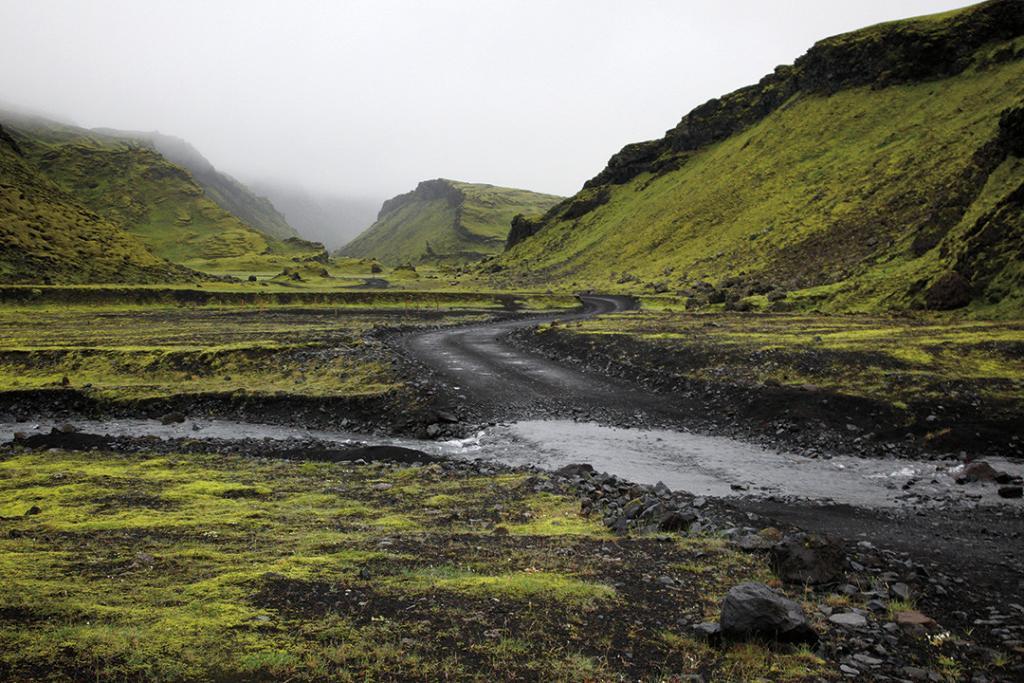
While plying the remote tracks of the interior it’s impossible to not marvel at the extreme contrasts of Iceland. On the way to the Fjallabak Nature Reserve, one of the country’s many protected places, vibrantly colored rhyolite mountains emerge from deeply cut canyons flanked by inky black lava fields. Geothermal steam vents hiss and gurgle against the silence of wilderness as springs of hot water bubble up from the depths below. These are the primordial remnants of Iceland’s violent birth, an event that consumed a third of the planet’s lava output. Even today, eruptions are ever present, with 30 active volcanoes continually threatening to hurl fountains of fire and ash into the sky.
Many of those subterranean tempests are buried deep under thick blankets of snow and ice like the massive ice cap of Vatnajökull. The largest in Europe by volume, it has more than two dozen individual glaciers surrounding it like spidery tendrils. From beneath those ribbons of ice flow torrents of water frequently interrupted by cascading waterfalls and rapid-filled canyons. The raw savageness of Iceland’s landscapes is juxtaposed against its serene beauty. Regularly marketed within the travel industry as the Land of Fire and Ice, the country’s duplicity extends far beyond glaciers and volcanoes.
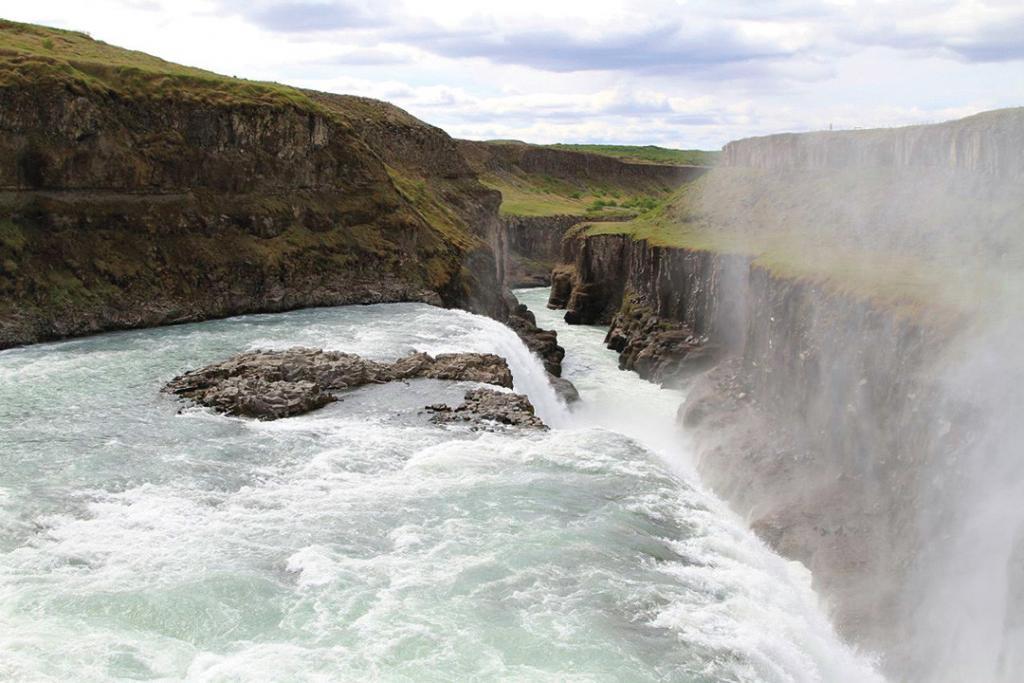
While the bulk of the Highlands are barren and uninhabited, the perimeter of the island is a pastoral paradise spotted with quaint farms and lined with rolling pastures speckled with fluffy sheep. The other prominent animal is the iconic Icelandic horse, of which more than 80,000 roam the countryside. Brought to the island by the first settlers, they have become a permanent part of the nation’s cultural identity, something Icelanders fiercely protect and preserve.
Shortly after the arrival of the Gaelic monks, the country was discovered once again by sailors from modern-day Norway. According to the Landnámabók, a text written between 1122 and 1133, a Norseman named Naddodd sailing from mainland Europe to the Faroe Islands was swept off course and landed on the shores of Iceland. Others followed suit by intent or accident until a Norwegian chieftain, Ingólfr Arnarson, settled on the island permanently in the year 874. A millennium later, Icelanders still cling to their Viking roots with the intrinsic resolve and fortitude of their ancestors.
With trade winds blowing at full gale and a driving rain wetting the verdant hillsides around me, I turned my truck westward toward another well-known attraction, the UNESCO World Heritage site at Þingvellir National Park. In our modern era, we have distilled the image of the Viking to that of a marauder motivated only by conquest. They were certainly prone to plunder, but they were mainly farmers, explorers, sailors, traders, and despite our contemporary portrayals, were surprisingly civilized.
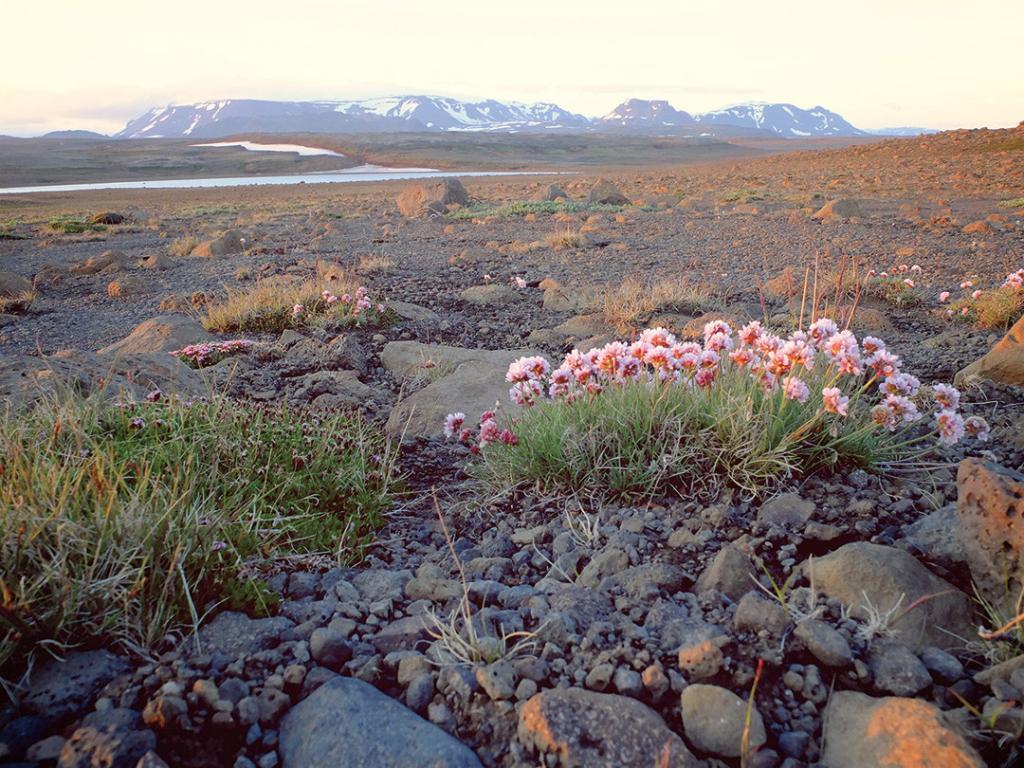
According to early writings, including the famous ancient Sagas chronicling the formative years of Iceland’s age of settlement, the first inhabitants were quite sophisticated, even genteel, and had an elevated sense of community, law, and ordered rule. Beginning roughly in the year 900, leaders and elders would gather at Þingvellir (a Norse word for assembly field), where they would settle disputes, create new laws, and maintain the structure of their fledgling commonwealth. Called the Alþingi, it still serves as Iceland’s functioning parliament. The oldest such institution in the world, it has now relocated to the capital city of Reykjavík.
When Ingólfr Arnarson and his wife first arrived in the Bay of Smokes on the western edge of the island, they could have never known it would become the bustling and colorful city it is today. Scandinavian in architecture and character, Reykjavík is the epicenter of the nation’s industry and tourism. Walking along the harbor front, the dependence on the sea is evident in the variety of vessels tied to the docks. Coast Guard cutters and hulking commercial trawlers play backdrop to vintage fishing boats refitted to shuttle paying passengers on whale watching tours and day excursions. It’s a maritime scene befitting a tiny island in the North Atlantic.
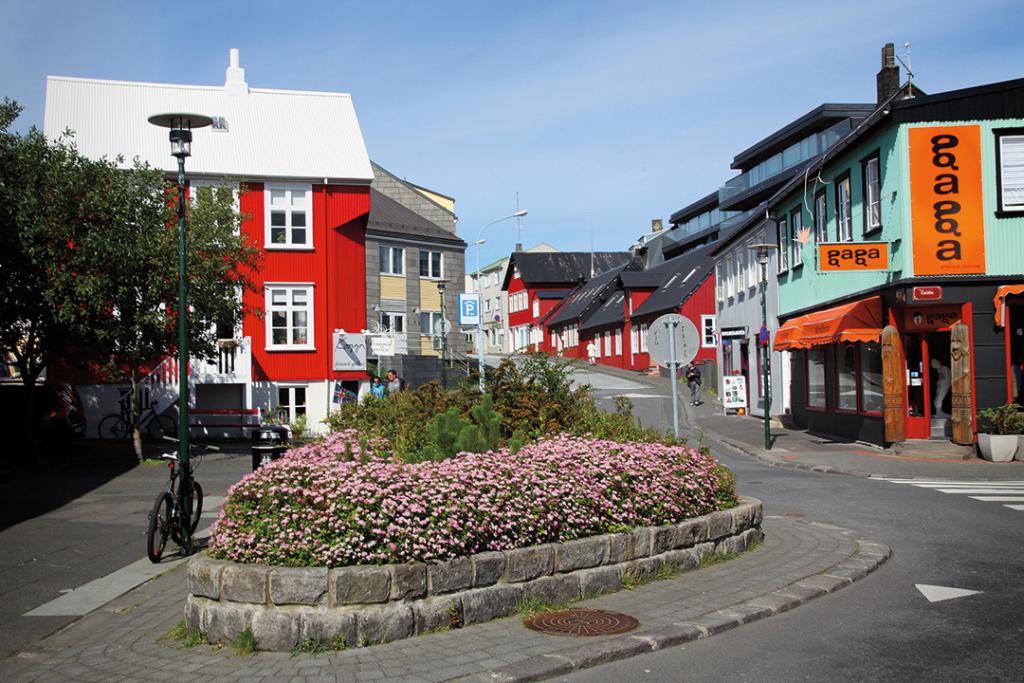
Easily traversed by city bus or on foot, most visitors to Reykjavík eventually work their way to the famous Laugavegur Street lined with shops and restaurants. It’s an ideal place to sample the country’s classic dishes like lamb stew made with native barley, or fresh seafood caught just offshore. For more adventurous appetites, some eateries offer minke whale, salted fish, or a choice cut of horse. If that doesn’t sound daring enough, there’s also the fishy-fowl flavor of puffin or the nearly toxic flesh of fermented shark, both ideally washed down with a stiff pour of the local distilled spirit, Brennivín. If such culinary explorations seem a bit too daunting, there is always the famous food stand, Bæjarins Beztu Pylsur, known throughout the globe for, of all things, hot dogs. If you get bored in Iceland’s largest city, you’re simply not trying hard enough.
Time is elusive here. Summer and winter daylight hours are in a state of near constant trickery with days of perpetual sunlight or total darkness. Even with almost 20 hours of daylight, my trip came to an end all too soon. As many visitors do, I capped off my adventure with a lengthy soak in the geothermal pools of the Blue Lagoon, conveniently located en route to the airport. With my face coated in silica sand, my tired body submerged in warm water, and the pungent smell of sulfur burning in my nose, I took a moment to think of what life must have been like for the settlers who first visited these shores. Then I did some settling myself––right into another cold beer.
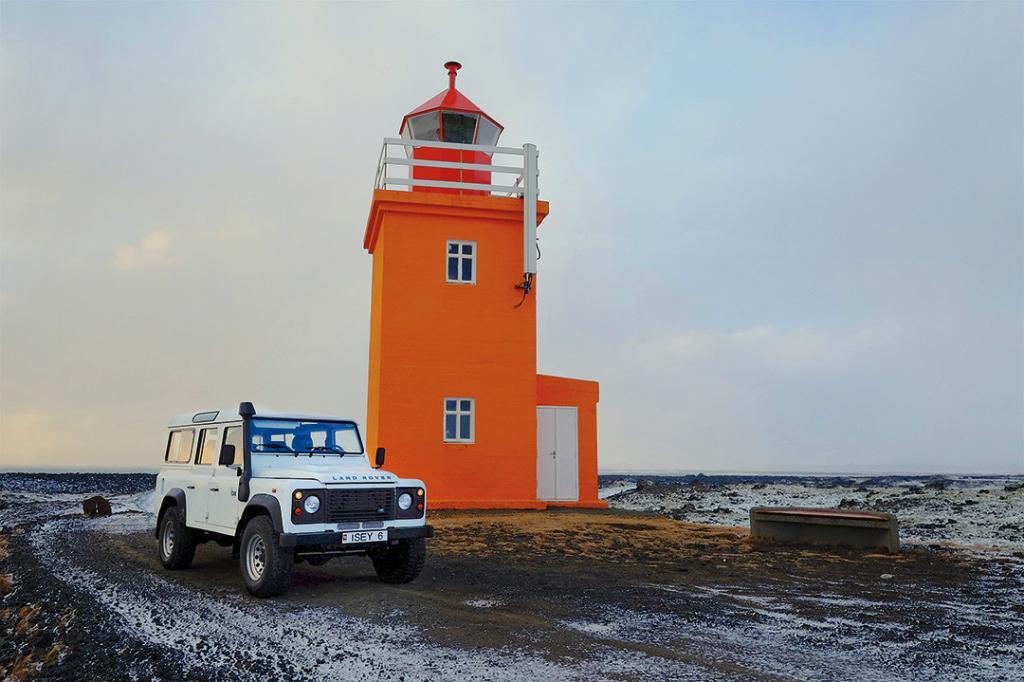
TRAVEL TIPS
Iceland’s tourism has increased at an alarming rate with the summer high season creating stiff competition for rooms, rental vehicles, and other resources. Book your travels well in advance if you plan to visit between June and August.
Despite the popularity of heavily modified 4WD trucks fitted with enormous tires, the vast majority of the F-roads in the interior can be traversed with a normal compact SUV. Be wary of water crossings though; insurance policies do not cover rentals damaged while fording rivers. For competitive rates and superb service we recommend Blue Car Rental. bluecarrental.is
It is of paramount importance you know which small roads are open for travel. Driving off-road, or even on a closed road, can result in harsh fines and even jail time.
Expect foul weather at any time of the year, but realize it is part of the raw and unfiltered experience of traveling in Iceland.
Before venturing into the interior, be aware that there are no towns or villages in the remote parts of the island, nor is there anything in the way of fuel, food, or accommodations.
Camping is a popular activity for locals and tourists alike, but be cognizant of where you can and cannot legally camp. Many of the delicate plants in the interior are easily damaged and much of the land along the coast is privately owned.
Author: Christophe Noel Photography: Christophe Noel & Scott Brady
This article was originally published in Summer 2017 issue of Overland Journal Europe.

